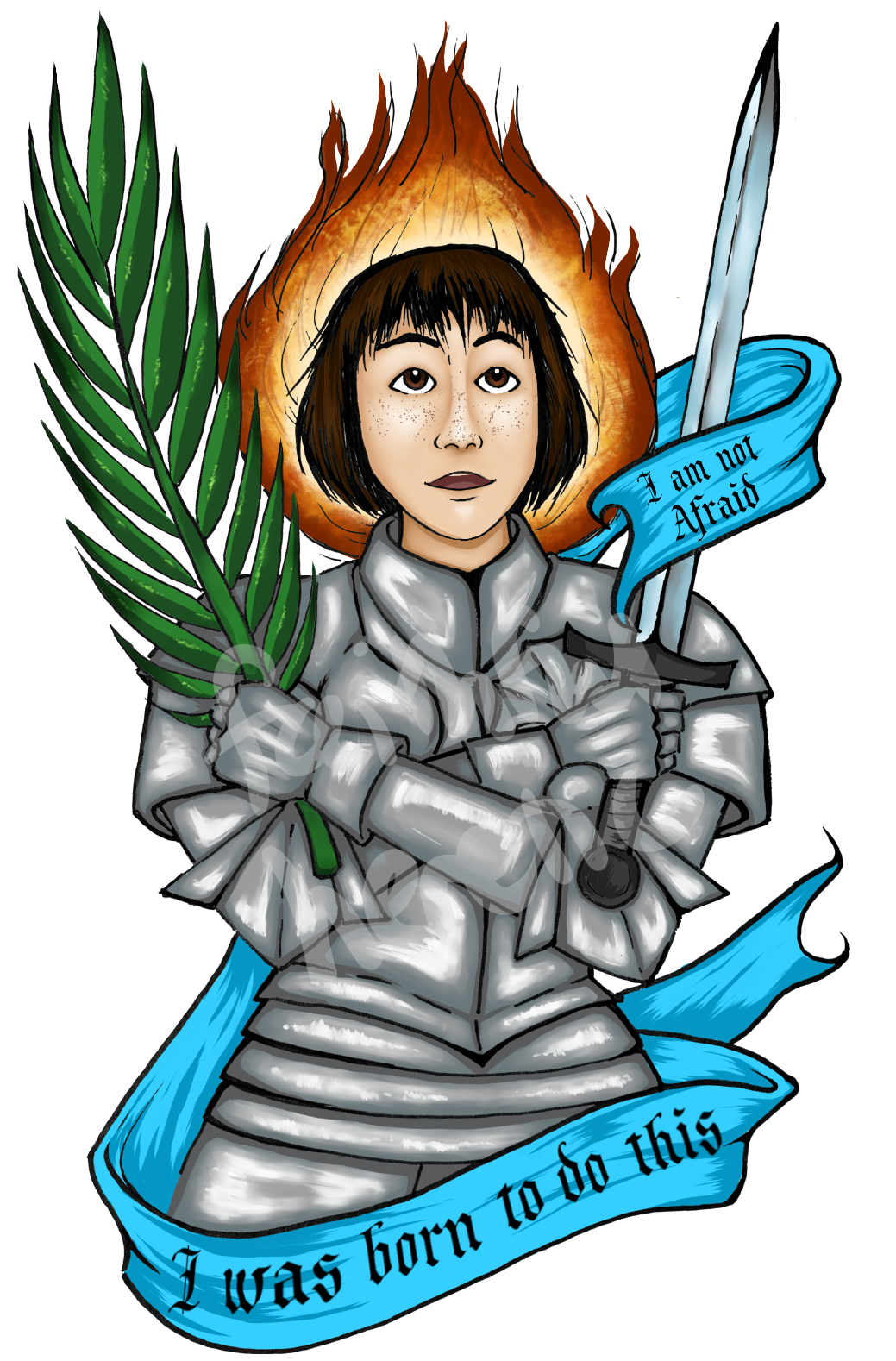Saint Joan of Arc
1412-1431, Kingdom of France
Feast Day: May 30

Background:
Joan of Arc is one of the best-documented and most widely-studied individual people from the Middle Ages. Her courage, grit, religious zeal, and transgression of conventional gender roles inspired many during her short life, and she remained a celebrated hero, martyr, and saint long after her death until her canonization in the early 20th century. Her legacy and her image have been used to justify causes associated with many factions and ideologies, both conservative and progressive. She is everything to everyone, and everyone wants a piece of her.
I venerate Joan of Arc as a fellow "weird girl." As many skeptics are happy to point out, she probably experienced some kind of psychosis, but I reject the idea that her peculiar neurology should discredit her witness. I remember what it was like to be a neurodivergent teenage girl with a bone to pick, surrounded by "normal people" who wanted me to be something else. I was diagnosed with ADHD when I was 25 years old. This is just the billable-to-insurance name that we've given to something that is inseparable from my personhood. Sometimes it gives me superpowers, and sometimes it makes me borderline unemployable. Giving it a name helps me manage it, but I also reject the idea that it is a "disorder." I am different. I am a weird girl. So was Joan. I recognize the fires that consumed her, and so do many other women and girls who know what it's like to be stigmatized, stereotyped, written off, and medicalized as "crazy," "hysterical," or simply "bitches."
Iconography
- "I am not afraid. I was born to do this." Joan said this when traveling through enemy territory. She trusted in God and her comrades to protect her.
- The sky-blue banner is a color traditionally associated with purity and the Virgin Mary.
- The flame-shaped halo represents both Joan's religious zeal and the method of her martyrdom.
- The palm frond is a traditional symbol for martyrs.